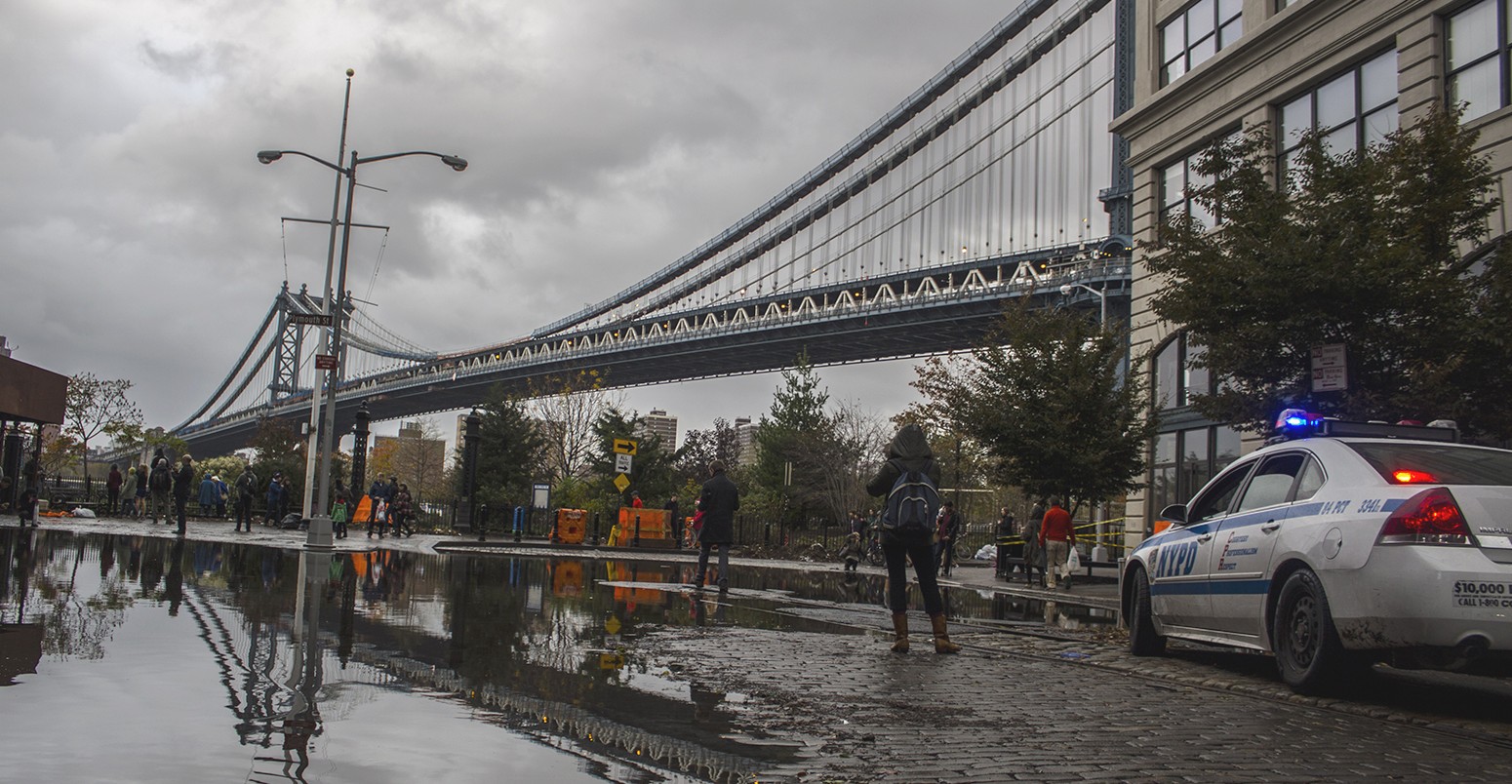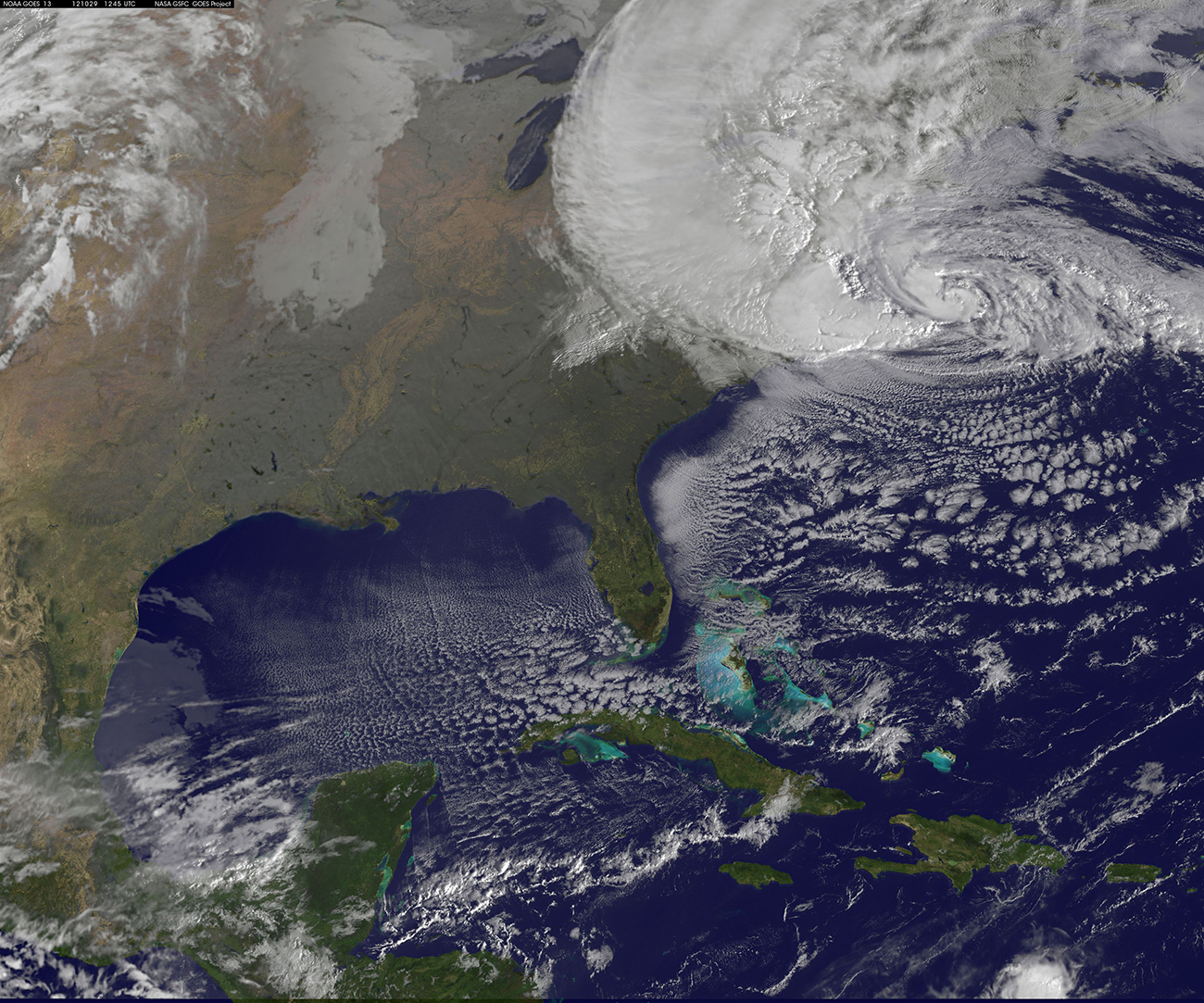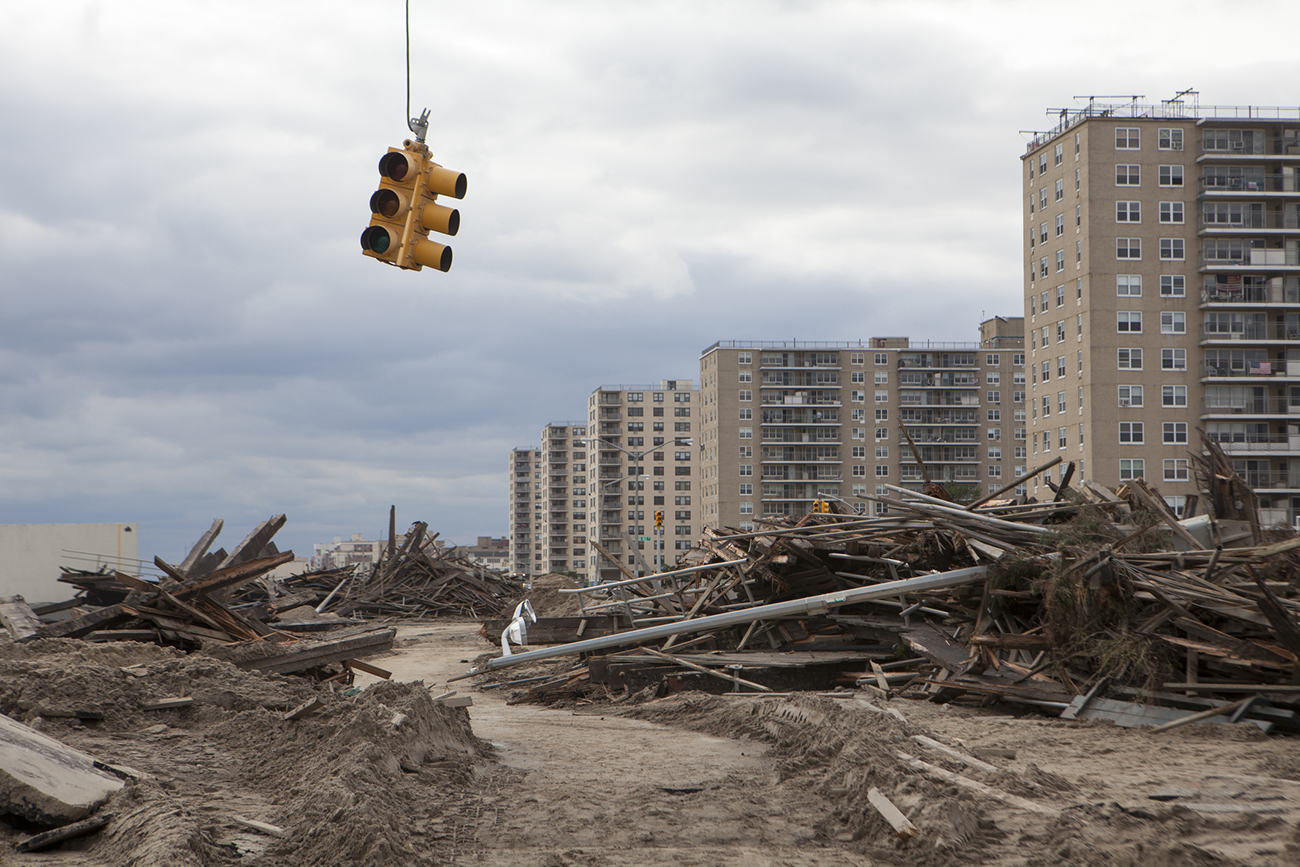
Hurricane Sandy-sized floods up to 17 times more likely by 2100
Robert McSweeney
10.10.16Robert McSweeney
10.10.2016 | 8:00pmAs the remnants of Hurricane Matthew recede into the Atlantic Ocean, the warnings and evacuations in the Caribbean and US east coast are giving way to rescue efforts and clean-up operations.
Four years ago, it was the turn of New York City to pick up the pieces after a bruising assault by the weather.
On the evening of 29 October 2012, Hurricane Sandy kept The City That Never Sleeps wide awake with 80 mile-per-hour winds and a record-breaking storm surge that caused widespread flooding.
Across the city, Sandy caused 43 deaths, damaged or destroyed hundreds of thousands of homes and businesses, and left millions without power. Much of the damage was a result of the storm surge the hurricane caused.
A new study, published in Proceedings of the National Academy of Sciences, says that a repeat of such a flood event could become as much as 17 times more likely by the end of this century.
Storm surge
When a storm weather system is over the sea, its low pressure centre pulls up the surface of the water. Then, as the storm blows onto the land, the wind pushes the sea towards the coast, creating even higher sea levels and hitting the coastline with large waves. This is a storm surge.
In New York City, the combined impact of the storm surge and a high tide saw sea levels reach a record height of 3.44m during Sandy. The surge swept up the East River, causing it to overflow its banks and flood Lower Manhattan, inundating seven major subway tunnels.
The height a storm surge can reach is dependent on three main factors: the underlying sea level, the size and severity of the storm, and the natural fluctuations of the tide. The new study focuses on the first two of these.
The researchers built a computer model to estimate the likelihood of a Sandy-like flood event in New York City in the past, present and future climate. The model combines historical data and projections for sea level rise with estimates for how the frequency and magnitude of tropical storms – such as Hurricane Sandy – could change.
Between 1800 and 2000, the risk of Sandy-like flood heights increased around threefold, the researchers find. Back in 1800, New York might only expect to encounter such high sea levels once every 1,200 years, whereas by 2000, the likelihood increased to about once every 400 years.
This is partly down to a global sea level rise of around 13-18cm, but mainly because of a “glacial isostatic adjustment” of about 26-30cm, the study says. This is the ongoing rebound of land that was once weighed down by ice sheets during the last ice age.

Satellite view of Hurricane Sandy on 29 Oct 2012. Credit: NOAA/NASA GOES Project.
For the future, the researchers project the frequency of Sandy-like flood heights is likely to rise “even more sharply” than it has in the past.
Under a moderate emissions scenario, rising sea levels and changing tropical storms mean that Sandy-like floods could be between three and 17 times more frequent by the end of the century, compared to present.
This would mean the residents of New York City could expect such high flood levels as often as every 23 years. Of course, we’re currently on a path of much higher emissions than this scenario.
Uncertainty
Whether tropical storms have been, or will be, made more frequent or intense by climate change is complicated and nuanced. Because hurricanes feed off warm waters, the theory goes that rising ocean temperatures have made – and will continue to make – hurricanes stronger. But pinpointing a trend has so far been hampered by poor data records.
In the North Atlantic, where most data is available, the Intergovernmental Panel on Climate Change concluded (pdf) that while it is unlikely that the annual count of tropical storms has risen over the last century, it is “virtually certain” that the frequency and intensity of the strongest hurricanes has increased since the 1970s.
Looking ahead, lead author Prof Ning Lin, assistant professor in civil and environmental engineering at Princeton University, says there is still uncertainty in climate models over how tropical storms will change. But it doesn’t mean the risks shouldn’t be considered, she tells Carbon Brief:
Projections of how sea levels will rise are much more certain, says Lin, and this plays the biggest role in the increasing flood risk. Even if tropical storms don’t become more intense or frequent, the recurrence of Sandy-like floods is still expected to increase from once every 400 years in the year 2000 to once every 90 years by 2100.

Estimated past and projected future relative sea level rise at Battery, New York City. The chart shows reconstructions of past sea level (red rectangles), observed changes (green line), average of climate model projections for future sea level (black line) under RCP4.5, and the range in model results (shaded area). Relative sea level change takes into account fluctuations in the level of the land surface. Source: Lin et al. (2016).
Prof Kevin Trenberth from the US National Centre for Atmospheric Research, who wasn’t involved in the study, agrees that there is more certainty around future sea level change than for tropical storms.
Despite some reservations about the study being based predominantly on model results rather than observed data, Trenberth says that we can be fairly certain that coastal flood risk in New York will increase in future. He tells Carbon Brief:
Making a definitive prediction of how Sandy-like flood events could change in future is difficult, but the benefits for protecting coastal cities are considerable, says Dr Andra Garner (née Reed), from Rutgers University, who authored a similar study last year. She tells Carbon Brief:
And as New York beefs up its defences to prevent future flooding, this study can help engineers ensure that they’re planning for the right level of protection for the future, says Lin:
Lin, N. et al. (2016) Hurricane Sandy’s flood frequency increasing from year 1800 to 2100, Proceedings of the National Academy of Sciences, doi:10.1073/pnas.1604386113


